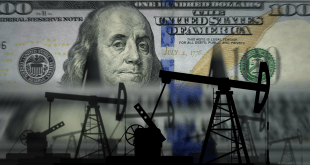Wall Street moved in an erratic manner, ending the trading week with minor losses. The major indices retreated from their monthly highs. The mid-May rally has encountered resistance.
The stock market appeared to be heading nowhere on Friday due to a lack of conviction, a week’s worth of company financial data, worries about disappointing profitability, and other factors.
Even while some investors may have found Friday’s uninteresting price movement frustrating to see, at least we’re no longer talking about “finding the bottom.” Despite fears of a recession, the market’s 7% increase so far in 2023 implies there is some confidence.
Stocks ended the trading day on Friday with just slight losses for the week, if not appearing to have plateaued. The trading activity this week, especially in high-growth equities like Netflix (NFLX) and Tesla (TSLA), which were depressed owing to disappointing earnings, signalled that investor optimism may have exceeded what the businesses have shown they can accomplish during a recession.
There is scepticism about what the Fed will do next despite optimism for an economy that has demonstrated incredible resilience and corporate earnings that haven’t been as bad as some had feared. Of the S&P 500 companies that have reported earnings thus far, close to 80% have surpassed Wall Street’s profit estimates. The central bank may be considering these same causes for optimism and seeing no need to slow the rate hike cycle given that rates have already been lifted significantly over the past year.
Dollar
For the first time in six weeks, the US Dollar Index (DXY) increased, but the trend is still downward. The crucial 101.50 support is still being held by the DXY. As markets wait for the upcoming catalysts, it has been drifting sideways since Tuesday. As traders reduced their wagers on the Fed cutting interest rates in the third and fourth quarters, the dollar gained.
USD/JPY posted a modest weekly gain, after being rejected from above 135.00. EUR/JPY and GBP/JPY also ended with small appreciations, showing some signs of a potential reversal.
EUR/USD traded all week under 1.1000 and above 1.0900, in a modest range, ending a seven-week positive streak. The bias continues to the upside, supported by expectations of more rate hikes from the European Central Bank (ECB) and a weaker US Dollar.
Despite upbeat UK economic data (except Retail Sales) and higher-than-expected inflation numbers that boosted expectations of more tightening from the Bank of England, the Pound posted minor gains versus the Dollar. GBP/USD moved all week near 1.2400. The pair continues to move sideways. EUR/GBP pulled back a bit after surging in the previous week.
AUD/USD remains capped by the 20-week Simple Moving Average (SMA) and is unable to move away from the 0.6700 area. The relatively hawkish Reserve Bank of Australia (RBA) minutes and positive employment data from Australia failed to lift the Aussie. AUD/NZD soared for the second week in a row but was boosted by a decline in the New Zealand Dollar.
USD/CAD rose more than 1% during the week climbing above 1.3500, to the 20-week SMA. The Loonie was the worst among majors, suffering from the decline in crude oil prices and the divergence between a Bank of Canada (BoC) on hold, and the rest of the central banks still raising rates.
Crypto Assets
It was a terrible week for cryptocurrencies. Bitcoin had the worst week since November; BTC/USD fell from $30,300 to $27,850. Ethereum retreated from above $2,100 to $1,880.
Gold, Oil
Gold pulled back, having the most significant weekly loss in two months, closing below $2,000. Silver also retreated and stabilized around $25.00 on Friday. Crude oil prices dropped more than 5% despite robust economic data. Uncertainty around global economic activity and interest rates weighed on the outlook for crude oil.
What to look for next week:
Markets are awaiting fresh catalysts during the week immediately before the central bank’s weeks. Major currency pairs are moving sideways, with the US Dollar having exhibited mixed performance.
The American currency is holding on to recent losses versus both the Euro and the Pound Sterling. The week’s pattern of performance could continue next week, considering that the first week of May is crucial with monetary policy decisions in Australia, the United States and the Eurozone.
The economic calendar is light next week, being the most relevant reports Australian and German inflation, US GDP and the monetary policy meeting in Japan. End-of-month flows could add to volatility.
On Saturday, Fed’s blackout period began, ahead of the May 2-3 meeting. The lack of comments from Fed officials could lead to quieter markets next week; however, there will be important economic reports. The odds of a 25 basis points rate hike were 88% after the US preliminary April PMI, up from 77% a week ago. It is seen as the last rate hike of the current tightening cycle.
The critical report in the US will be first-quarter GDP growth (advance estimate), with market consensus pointing to an expansion at a 3.9% annualized rate. Also important will be the Core Personal Consumption Expenditure included in the GDP report and on Friday in the Personal Income and Spending report. It is the Fed’s preferred inflation gauge.

 Noor Trends News, Technical Analysis, Educational Tools and Recommendations
Noor Trends News, Technical Analysis, Educational Tools and Recommendations




